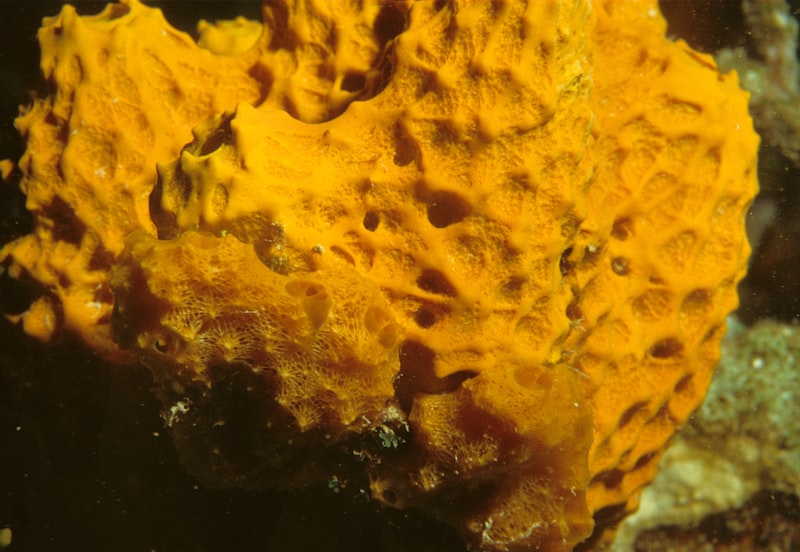One of the most remarkable adaptations of marine mammals is their streamlined body shape. Unlike their terrestrial counterparts, marine mammals have evolved sleek, hydrodynamic bodies that reduce drag and allow for efficient movement through water. This shape not only aids in swimming but also helps them conserve energy during long migrations or deep dives.
Another key adaptation is their ability to regulate body temperature. Living in water that can vary greatly in temperature, marine mammals have developed specialized mechanisms to maintain a stable internal environment. For instance, blubber—a thick layer of fat beneath the skin—acts as both insulation against the cold and as a store of energy during times of food scarcity.
Communication under water poses unique challenges, yet marine mammals have evolved sophisticated methods to navigate and communicate effectively. Whales, for example, use low-frequency sounds that can travel over long distances through water, allowing them to communicate with each other and locate prey in the vast ocean depths.
Diving prowess is another standout feature of marine mammals. Species like the sperm whale can dive to incredible depths in search of food, thanks to adaptations such as collapsible lungs that minimize nitrogen absorption and a slowed heart rate to conserve oxygen.
Social structures among marine mammals also reflect their adaptation to life in water. Many species form complex social groups, from pods of dolphins to colonies of seals, which aid in protection, hunting, and raising offspring in the challenging marine environment.
From Fins to Flippers: How Marine Mammals Evolved for Aquatic Life
Have you ever wondered how marine mammals, like dolphins and whales, adapted to life in the ocean? Their evolution from land-dwelling ancestors to graceful swimmers is a fascinating journey shaped by millions of years of natural selection.
Millions of years ago, certain land mammals faced a critical challenge: how to thrive in the vast expanses of water. This marked the beginning of a remarkable transformation. Over time, these ancestral mammals developed streamlined bodies, modified limbs, and other specialized adaptations that allowed them to conquer the seas.
One of the most striking adaptations is their limbs. What once were legs adapted into flippers, ideal for steering and propelling through water with incredible agility. This change wasn’t overnight but evolved gradually, a testament to the power of incremental adaptations over generations.
Their respiratory systems underwent significant changes too. Marine mammals developed the ability to hold their breath for extended periods and extract more oxygen efficiently from each breath. This adaptation enables them to dive deep and stay underwater for extended hunting or exploration.

Another critical evolution was in their senses. Echolocation, for instance, emerged as a vital tool for navigating the ocean’s vast darkness. By emitting sounds and interpreting their echoes, marine mammals can “see” their surroundings with remarkable precision, essential for finding food and avoiding predators.
Beyond physical adaptations, their social structures also evolved. Many marine mammals exhibit complex social behaviors, forming tight-knit groups that cooperate in hunting and raising young. These social bonds contribute to their survival in the often challenging marine environment.
In essence, the journey from fins to flippers represents a triumph of evolutionary innovation. It showcases how nature’s forces, over eons of time, sculpted these creatures into the masters of the ocean that we marvel at today. Their story continues to inspire and remind us of the incredible diversity and adaptability of life on Earth.
Survival Strategies: Adaptations That Help Marine Mammals Thrive in Water
Ever wondered how marine mammals, like dolphins and seals, are perfectly adapted to life in the water? These incredible creatures have evolved over millions of years, developing specialized survival strategies that enable them to thrive in their aquatic habitats.
One of the most fascinating adaptations is their streamlined bodies. Take dolphins, for example. Their sleek shape reduces water resistance as they glide through the ocean, allowing them to swim swiftly and efficiently. It’s like they’re born with their own built-in wetsuit, designed by nature to help them navigate the depths effortlessly.
But it’s not just about speed; marine mammals are masters of diving too. Seals, for instance, can hold their breath for extended periods and dive to astonishing depths in search of food. Their lungs and muscles are adapted to withstand the pressures of the deep, showcasing nature’s ingenuity in equipping them for underwater survival.
Another crucial adaptation is their insulation. Living in water, where temperatures can fluctuate dramatically, requires effective thermal regulation. Marine mammals have a layer of blubber beneath their skin, acting like a natural wetsuit that keeps them warm even in chilly waters. It’s nature’s way of ensuring they stay comfortable and protected, no matter the ocean conditions.
Communication is also key in their underwater world. Whales, known for their haunting songs that travel for miles through the ocean, use sound to navigate, find food, and communicate with their pod members. It’s a complex form of language that demonstrates their social intelligence and survival cooperation.
And let’s not forget their senses. Dolphins, with their highly developed echolocation abilities, can “see” underwater by emitting sounds that bounce off objects and prey, allowing them to create a mental map of their surroundings. It’s like having sonar built into their biology, giving them a distinct advantage in the hunt for survival.
The Secret of Blubber: How Marine Mammals Stay Warm in Cold Seas
Ever wondered how marine mammals manage to thrive in the icy waters of the world’s oceans? The secret lies in a fascinating adaptation called blubber. This specialized layer of fat beneath their skin serves multiple crucial purposes, primarily acting as a highly efficient insulator against the cold.
Blubber not only keeps marine mammals warm but also helps them regulate their body temperature in harsh environments. It serves as a protective barrier, preventing heat loss by providing a thick, insulating layer that retains body heat. This adaptation is particularly vital for species like whales, seals, and walruses that inhabit cold seas and polar regions.
Imagine blubber as nature’s own wetsuit, but far more effective. It’s like wearing multiple layers of thermal clothing that keep you snug even in freezing temperatures. This fat layer is not just about insulation; it also stores energy reserves, essential for survival during periods of fasting or migration.
Another remarkable aspect of blubber is its buoyancy. This fat layer is less dense than water, helping marine mammals stay afloat effortlessly while conserving energy. It’s a balance of insulation and buoyancy that allows these creatures to navigate their aquatic habitats with remarkable efficiency.
So, the next time you marvel at a playful seal or a majestic whale breaching the ocean’s surface, remember the incredible adaptation that makes their existence in cold seas possible. Blubber isn’t just fat; it’s a sophisticated solution crafted by evolution to ensure the survival of marine mammals in some of the planet’s most challenging environments.
Echolocation Wonders: How Marine Mammals Navigate the Depths
Echolocation is a marvel of nature’s engineering. These marine animals emit high-frequency clicks or sounds which travel through the water. When these sound waves encounter an object, they bounce back as echoes. By interpreting the timing and intensity of these echoes, the animal can determine the size, shape, distance, and even texture of the object. It’s akin to creating a detailed 3D map of their environment through sound alone.
For dolphins, echolocation is not just a survival tool but a way of life. They emit clicks through specialized organs in their nasal passages called “melon,” which focuses and directs the sound waves. The echoes return to the dolphin’s lower jaw where they are transmitted to the inner ear. This process is incredibly fast and precise, allowing dolphins to locate prey with pinpoint accuracy, even in murky waters.
Whales, despite their immense size, are also masters of echolocation. Toothed whales, like orcas and sperm whales, use this ability to hunt and navigate over vast distances. Sperm whales, for example, emit powerful clicks that can travel for kilometers and penetrate deep into the ocean’s darkness. They use echolocation not only for finding prey but also for communicating with each other in the vast expanses of the ocean.

Porpoises, smaller cousins of dolphins, rely heavily on echolocation to navigate complex coastal environments. Their clicks are well-suited for detecting smaller prey like fish and squid. This acute sensory ability helps them thrive in habitats where visibility is limited and where relying solely on sight would be impractical.
In essence, echolocation is more than just a survival mechanism for marine mammals; it’s a testament to their extraordinary adaptability and evolution. By harnessing the power of sound, these creatures unlock a hidden world beneath the waves, demonstrating nature’s ingenuity in the most challenging of environments.
Frequently Asked Questions
How do marine mammals stay warm in cold ocean waters?
Marine mammals stay warm in cold ocean waters through a combination of thick layers of blubber under their skin, which insulate their bodies, and dense fur or specialized skin that traps air and prevents heat loss. Their circulatory systems also help by efficiently conserving body heat, ensuring they remain warm even in chilly environments.
What challenges do marine mammals face living in saltwater environments?
This FAQ provides a concise overview of the challenges faced by marine mammals in saltwater environments, focusing on unique physiological adaptations required for osmoregulation, threats from pollution and habitat loss, impacts of climate change such as ocean acidification and warming, and interactions with human activities like fishing and shipping.
How do marine mammals breathe underwater?
Learn how marine mammals breathe underwater, including their specialized adaptations such as having large lungs and a high concentration of myoglobin in their muscles. These adaptations enable them to hold their breath for extended periods while diving deep to hunt for food.
What adaptations do marine mammals have for swimming?
Discover how marine mammals are uniquely adapted for swimming through specialized features such as streamlined bodies, flippers, and efficient respiratory systems. Learn how these adaptations enable them to thrive in aquatic environments.
What are some examples of marine mammals and their unique adaptations?
Discover fascinating examples of marine mammals and their unique adaptations. Learn about dolphins, known for their echolocation abilities enabling precise navigation. Explore seals, with streamlined bodies and thick blubber for warmth in cold waters. Delve into whales, featuring baleen plates for filter feeding or toothed whales for hunting prey with echolocation. Each species showcases remarkable adaptations for thriving in their oceanic habitats.


